One may ask "Why we chose to visit Wagga Wagga" and my response is "No real reason", but with a name like 'Wagga Wagga', why wouldn't you decide to check it out? And the town is on the south bank of the Murrumbidgee River, the second longest river in Australia. Wagga Wagga has a population of 63,000 and is approximately half way between Sydney and Melbourne. It is about 450 kilometres to each. It is said Wagga Wagga is 'A City of a Hundred Little Things'.
The Murrumbidgee River's headwaters arise in the Snowy Mountains, about 50 kilometres north of Kiandra and it flows in a western direction until it discharges into the Murray River near Boundary Bend or Balranald, not far from Mildura. The Murrumbidgee is 1,600 kilometres in length and it does actually flow for 66 kilometres in the ACT, near Canberra. The Murrumbidgee drains much of southern New South Wales and all of the Australian Capital Territory, and is an important source of irrigation water for the Riverina farming area. Murrumbidgee means 'big water' in aboriginal language and before the Snowy Mountain Scheme and the construction of Lake Eucumbene reservoir, I would have thought that there were many times that 'big water' flowed down the Murrumbidgee. A visit to this area makes one talk more about the changes to legislation on how much water should be released back into the river systems of both the Murrumbidgee and Murray Rivers.
There is a walk trail all around the edge of the Murrumbidgee River, as it wanders around the city of Wagga Wagga. We walked a little of the trail on Tuesday morning, after the washing was done. It is supposed to rain on Wednesday, so we made the decision to stay in Wagga for an extra night and not leave until Thursday. As it turned out it was a good decision because when we tried to get out of the caravan on Wednesday morning, we were locked in! With no tools and one broken kitchen knife, it was time to think of another plan. At 7.30am we decided John should be awake! So J & D got the SOS and early phone call. Handing the key through the window was the first try, but that didn't work, so next was to unlock the car and instruct John on where to find the tools bag. Within 15 minutes the lock of the door was in pieces and we were out! So a few hours of Wednesday morning was spent organising a new lock and getting it fitted. So glad it didn't happen in a small town and so glad that the guy was able to come and do the job. As Peter said "He would have been playing around for most of the day, to fit the complete new handle and locking system". Can't believe I didn't take any photos! Well only a couple of boring ones to send to the caravan guy, but I can share one of our site and the horrible flying fox bats that were living in the trees on the river! It was just a short walk from the CP to the river.
Back to walking the 'Wagga Trail of the Murrumbidgee'......The area that is the 'Town Beach' was really lovely and no doubt really popular with the locals, particularly during the summer months. The Wagga Wagga Beach is an excellent example of the sand deposit beaches that form along the course of slow moving western rivers. It is said there are many examples of these sandy beaches along the Murrumbidgee River, as it meanders its course across the western slopes and plains of NSW. These beaches form naturally on the inside bend of the river, where the slower moving water deposits sand and silt to form sandy beaches.
Later on Tuesday we visited the 'Victory Memorial Gardens', which were designed in 1920. They are situated in the centre of the city and cover 2 hectares of land. There was quite a number of Monuments, a Cenotaph, Memorial Arch, Playground, Senses Garden and a Covered Stage. Within the park there are a number of huge trees and one really huge one has had fairy lights placed through it. It would be quite spectacular when lit up. There was even electric fencing insulators in the tree, obviously to deter vandalism.
The plaque providing information about the 'Wagga Wagga Kangaroo March' in 1915, I found interesting. In late 1915 and early 1916 recruitment marches were held across the country. The longest march in NSW and Qld was the 'Kangaroo March', which began on 1st December 1915. Eighty eight Wagga Wagga men volunteered - most in their early 20's. By the time the men reached the outskirts of Sydney, there was over 220 in all. They marched with rousing cheer, stirring music and sustenance support from townsfolk along the way. They averaged 8.8 miles per day before finishing at Campbelltown, where the 'Kangaroo' recruits went by train into Sydney. The march captivated the early war years sentiment of the times.
I was really moved with the 'Eternal Flame' and the whole design of the Memorial to those who have served in all wars. The restoration of the 'Eternal Flame' was a 'Centenary of Anzac' project and the re-lighting of the flame was done by 100 year old Colin Bell, Wagga Wagga's oldest surviving WW2 veteran. The circular design of the 'Eternal Flame' is to represent eternity, no specific start or no specific end - 'Lest We Forget'. The medium used is stainless steel and brass - 'Age Will Not Weary Them'. The sculpture of internal stainless steel rings and studded brass components are made in multiples of 3 to represent the 3 main services - 'Army, Air Force & Navy', and are directed to the centre of each of the 3 main words - 'Sacrifice, Liberty, Vigilance'. The flame is dimmed to a pleasant glow at night.
In walking around this central historic area of Wagga Wagga, we were attracted to an area of water that was once an aboriginal lagoon. It is called the 'Wollundry' which means 'place of stones'. The area was redeveloped as a 'Centenary of Federation' project and it now has the 'Federation Riverina Amphitheatre'. The cities aim is to encourage use, interpretation and promotion of the Lagoon as the centre and heart of the city. This area was very much an arts and cultural precinct. One of the pathways leads down under the bridge and back to the Victory Memorial Gardens. Under the bridge, the 2008 Mural project is displayed.
As part of the 2008 Bald Archy Prize, the Museum of the Riverina commissioned a Melbourne artist to conduct a mural project with young Wagga Wagga artists. The result was caricatures depicting famous Wagga Wagga people, all with links to the cities heritage. The selection is representative of the talent and contribution residents have made through bravery, infamy, entertainment, cultural and sport in Australia and worldwide. There are 8 subjects that have been recognised. Mark Taylor and Michael Slater, both Wagga Wagga boys. Dame Edna Everage who was born in Wagga Wagga. Henry Baylis was the towns first police magistrate. There were two Olympic Games hopefuls from the Beijing Games. Bill Kerr was an icon of Australian and British film. Dame Mary Gilmore the famous Australian poet grew up in Wagga Wagga. Paul Kelly Sydney Swans footballer was born in Wagga and finally Tom Castro, the famous Wagga Wagga butcher was on a mural. They all added colour and an attraction to check out what was under the bridge. Lots of 'Wagga Wagga' in this paragraph!
On Wednesday afternoon we visited the RAAF Wagga Heritage Centre. The aircraft clearly visible from the road as we came into Wagga Wagga, 11 kilometres south east of the town, was enough to bring us back! A young serviceman who had injured his arm some weeks earlier was on duty and he provided us with an overview of the rooms and the memorabilia that is housed in each of them. There were artifacts pertaining to over 75 years of Air Force history.
RAAF Wagga Heritage Centre is located in the original guard house which was the first building built on the base in 1940. There are three cells in this area which were used to house personnel who misbehaved. In the foyer area is a display of uniforms of Air Marshall Scherger who was the first of three RAAF officers to hold the rank of Chief Air Marshal and one of the first Base Commanders. RAAF Apprentices were a big part of the early history of the RAAF Base Wagga. The way recruits have been trained at the RAAF Wagga Base has changed so much over the years. It was a bit hard to get your head around it all! These days sailors, soldiers, airmen and airwomen receive quality induction, training and education at RAAF Wagga.
The RAAF Wagga Aviation Heritage Centre is one of four Air Force Heritage Centres across Australia. The other Centres are at the Bases of Townsville, Amberley and Williamtown. They tell a unique story relevant to their Base. They are working together towards the celebration of the Centenary of the RAAF in 2021. Following WWII, many bases like Wagga were slowly drawn down as the RAAF contracted to a peacetime size. Today RAAF Base Wagga is the last remaining RAAF Base in the Riverina and it is a significant 'Recruit Training Centre'. We saw the sign for the 'Kapooka Army Training Centre' on the Olympic Highway as we left Wagga Wagga.
There was a room where special displays are put together. The display on our visit was recognising the 31st RAAF Beaufighter Squadron which was formed in Wagga Wagga on the 14th August 1942. The Squadron served at Darwin & Islands to the north. They flew 2660 offensive sorties against the enemy, resulting in a recorded scoreboard of 20 enemy aircraft destroyed in the air, plus 2 probables. 54 enemy aircraft destroyed on the ground, 14 enemy aircraft damaged in the air and 32 enemy aircraft damaged on the ground. 9 ships were destroyed and 4 ships damaged. That's enough! I have to admit I have struggled with this assignment!
The Wagga Wagga Railway Station is a heritage listed railway station and a museum is now housed there. It looked such an attractive building, we just has to stop for a photo. We found that a passenger train does still stop at the city. Wagga Wagga has two train services a day to both Melbourne and Sydney. The Railway Station was opened on the 1st September 1879.
To conclude our time in Wagga Wagga, we decided to have a barbecue together in the camp kitchen. So we made a salad and packed what we needed into the baskets. We actually took a couple of brollies with us as well, because it was looking heavy to the south west. Well we did get a storm whilst having dinner, so it was lovely to hear the rain on the tin roof. You can't beat it! But we also had a couple of enjoyable conversations with other holiday travellers. One lady just happened to be the daughter of one of John and Dorothy's Geraldton High School teachers. Her surname was Rosier, not a common name I thought, so I asked her if she was any relation to Anglican Bishop Bruce Rosier. She said "He was her Uncle". Well Anglican Minister Bruce Rosier prepared me for confirmation in Kellerberrin and my mother in her later life. Bruce went on to become a Bishop in South Australia and I saw that he had been to the Underground Church in Cooper Pedy, when we were there in 2014. Bruce is 89, still quite fit and lives in Adelaide. I was so glad I asked the lady and she was pretty chuffed too! Peter had a stimulating conversation with a young couple travelling with a camp trailer. They came from the Lachlin River area, 300 kilometres north and the guy was an 'Eagles' supporter. Wagga Wagga ended up with a very welcome 10 mls of rain. Oh dear! This blog is huge again. We seem to be seeing so much, there is so much learning and there are so many stories to record.

 Wagga Wagga, New South Wales, Australia
Wagga Wagga, New South Wales, Australia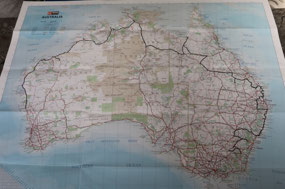
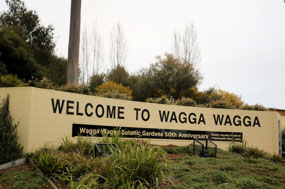
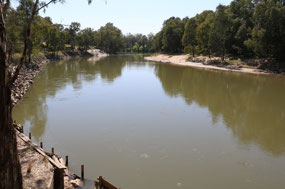
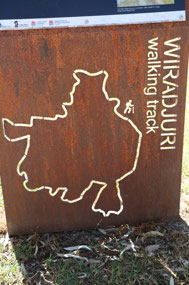
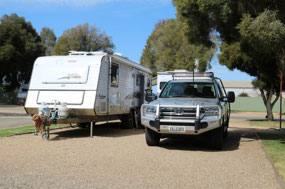
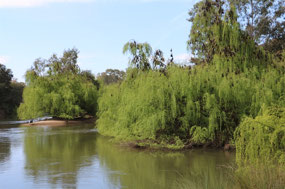
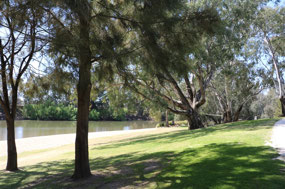
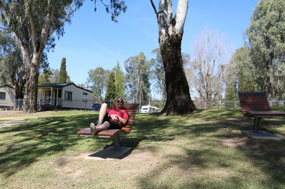
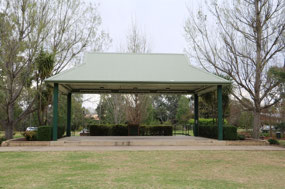
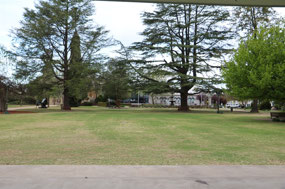

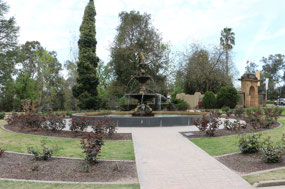
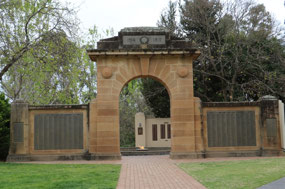
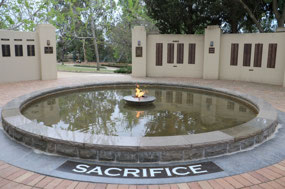
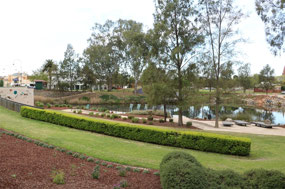
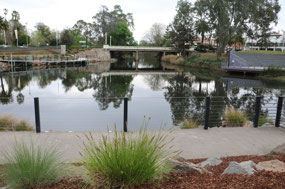
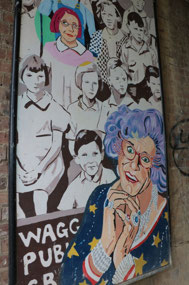
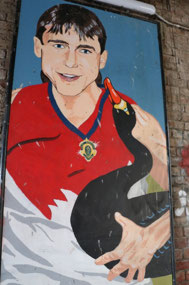
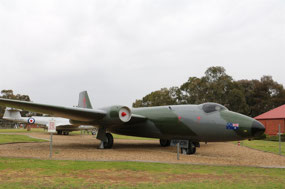
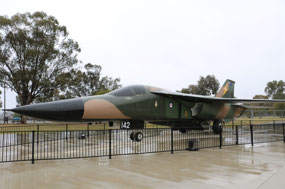
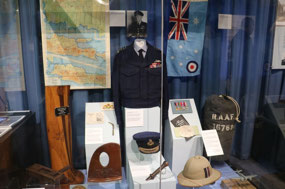
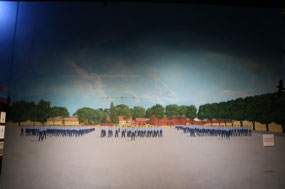
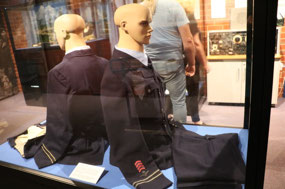
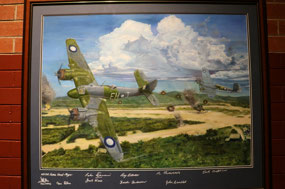
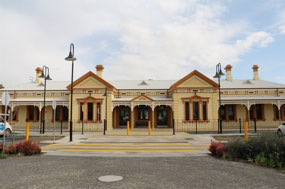
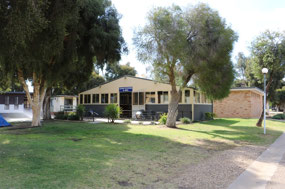
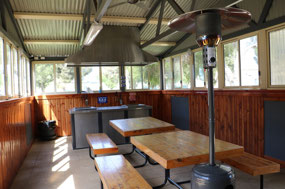


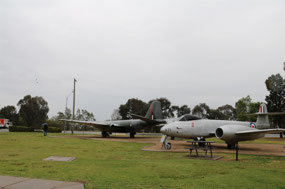
Coralie
2018-10-06
Just read the stories .Can Peter remember the Pat & Heather Farrells were Chilsoms from Geraldton. Enjoy the travelling bug.bye T & C.
pamandpete
2018-10-07
Yes I do think Peter remembers Coralie. Trust you are well back in Geraldton. The 'Travelling Bug' has nearly been satisfied. Think we should be home within a month.